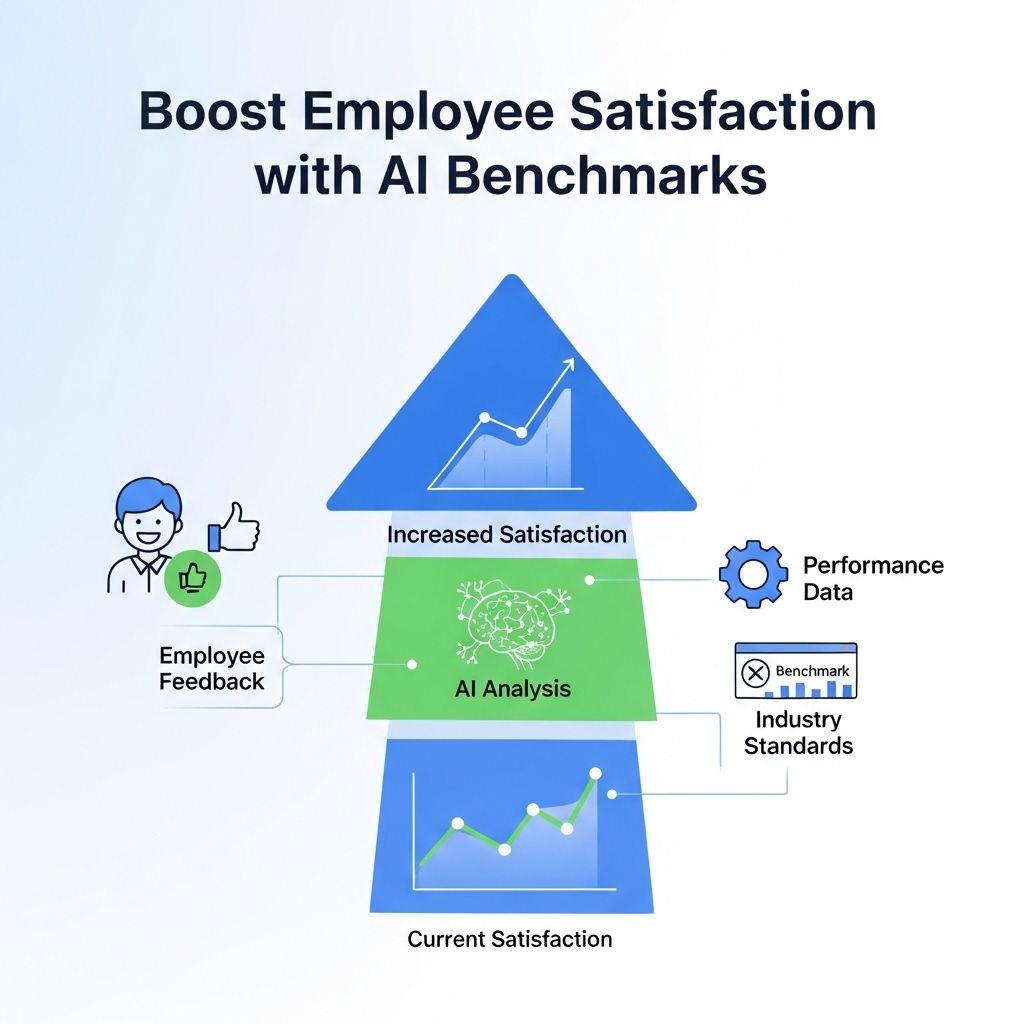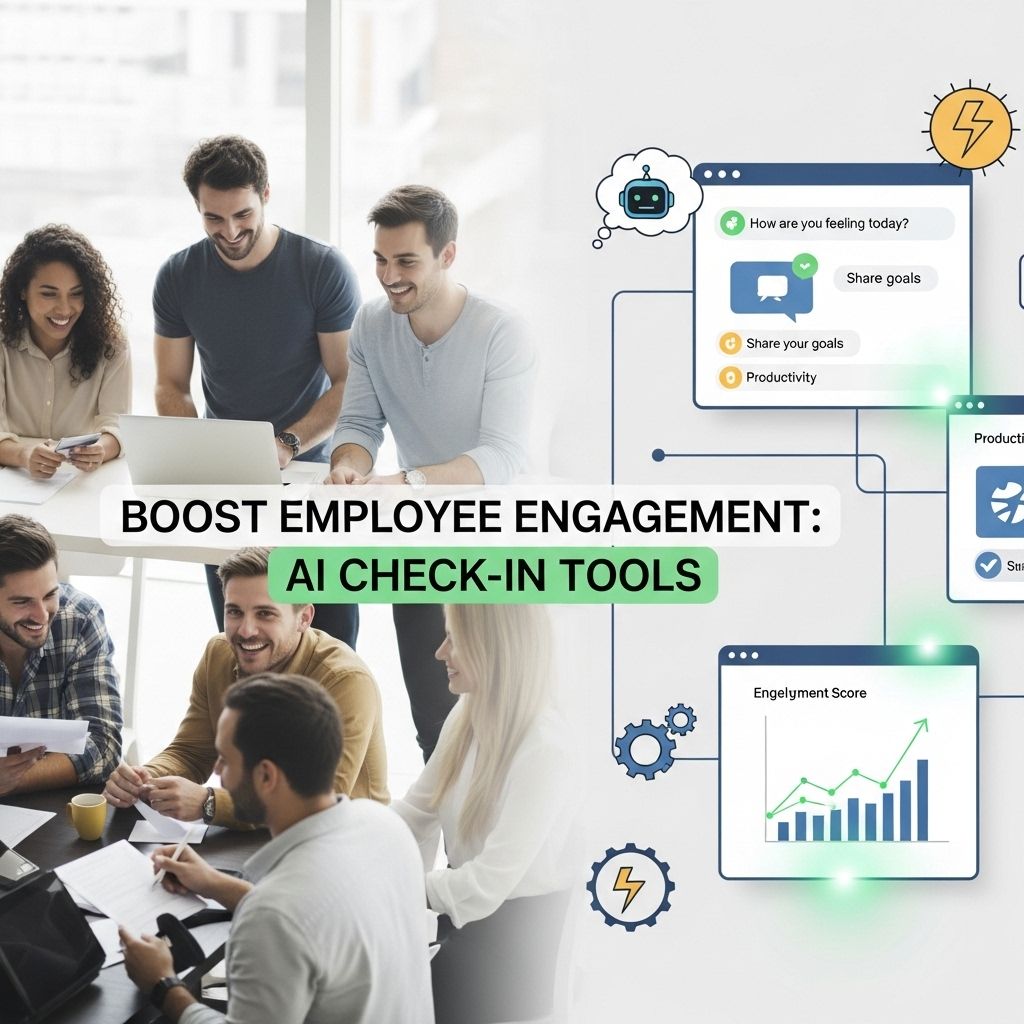Boost Employee Satisfaction with AI Benchmarks
Discover how AI benchmarks can enhance employee satisfaction and drive workplace engagement. Learn effective strategies to implement today.

In today’s fast-paced business environment, the need for effective employee engagement strategies has never been more critical. As organizations look to improve their workforce’s morale and productivity, leveraging technology such as artificial intelligence (AI) can lead to groundbreaking transformations. By utilizing AI benchmarks, companies can gain insights into employee satisfaction levels, track progress, and implement data-driven strategies that foster a positive workplace culture. In this article, we’ll explore how AI benchmarks can be utilized to boost employee satisfaction, highlighting their significance, ways to implement them, and the future of workplace engagement.
Table of Contents
Understanding AI Benchmarks in Employee Satisfaction
AI benchmarks serve as measurable standards that organizations can use to evaluate their performance in various domains, including employee satisfaction. They involve the collection and analysis of data to determine how well a company meets its objectives and how it performs in comparison to industry standards or competitors.
Importance of AI Benchmarks
Implementing AI benchmarks for employee satisfaction comes with several advantages:
- Data-Driven Insights: AI can analyze vast amounts of employee feedback and performance data, revealing trends and areas for improvement.
- Personalization: Organizations can tailor their employee engagement strategies based on the unique needs of their workforce.
- Proactive Measures: By assessing satisfaction levels regularly, companies can address issues before they escalate.
- Informed Decision-Making: Leaders can make strategic decisions based on comprehensive data rather than intuition alone.
Implementing AI Benchmarks for a Better Work Environment
To successfully implement AI benchmarks aimed at boosting employee satisfaction, organizations can follow these key steps:
1. Define Objectives and Metrics
Before utilizing AI, it is essential to establish clear objectives regarding employee satisfaction. Define the metrics that will be used to evaluate success, such as:
| Metric | Description |
|---|---|
| Employee Engagement Scores | Measures how committed and emotionally invested employees are in their work. |
| Retention Rates | Tracks the percentage of employees who stay with the company over a specific period. |
| Feedback Frequency | Assesses how often employees provide feedback, indicating their willingness to communicate. |
| Work-Life Balance Ratings | Evaluates employee perceptions of their ability to maintain a healthy work-life balance. |
2. Collect Data using AI Tools
Utilize AI-powered tools to collect data from various sources such as employee surveys, feedback forms, and performance reviews. Some popular tools include:
- SurveyMonkey: Offers customizable templates and powerful analytics.
- Qualtrics: Provides advanced features for employee experience management.
- Officevibe: Focuses on real-time feedback and engagement metrics.
3. Analyze the Data
Once data is collected, AI algorithms can analyze the information to identify trends and correlations. For instance, an increase in workload may correlate with lower engagement scores. Use machine learning models to predict employee satisfaction outcomes based on various factors.
4. Implement Data-Driven Changes
Based on the insights gained from the data analysis, organizations should implement changes aimed at improving employee satisfaction. These could include:
- Developing targeted training programs.
- Enhancing communication channels.
- Offering flexible working hours or remote work options.
- Creating recognition programs for outstanding performance.
5. Monitor Progress Regularly
Ongoing monitoring of employee satisfaction is crucial. Schedule regular check-ins using AI tools to assess the impact of implemented changes and adjust strategies as necessary.
Best Practices for Leveraging AI Benchmarks
To maximize the effectiveness of AI benchmarks in improving employee satisfaction, consider the following best practices:
1. Foster a Culture of Transparency
Encourage open communication among employees about satisfaction metrics and the changes being made based on feedback. Transparency builds trust and encourages ongoing engagement.
2. Personalize the Employee Experience
Utilize AI to create personalized experiences for employees. For example, tailor professional development programs based on individual career goals and feedback.
3. Encourage Continuous Feedback
Make feedback a regular part of the workplace culture. Utilizing AI to facilitate ongoing surveys or pulse checks can keep employees engaged and ensure their voices are heard.
4. Invest in Training for Managers
Leaders should be trained on how to interpret AI benchmark data effectively. This training will empower them to make informed decisions that enhance employee satisfaction.
The Future of Employee Satisfaction in the Age of AI
As AI technology continues to advance, the potential for enhancing employee satisfaction will only grow. Some anticipated trends include:
- Predictive Analytics: Leveraging AI to predict employee needs and behaviors before they arise.
- Natural Language Processing: Using AI to analyze employee sentiment from written feedback and communication.
- Virtual Work Environments: Creating immersive virtual environments for collaboration and engagement.
Organizations that embrace these technological advancements will not only improve employee satisfaction but also foster a culture of innovation and adaptability.
Conclusion
Incorporating AI benchmarks into employee satisfaction strategies represents a significant opportunity for organizations aiming to enhance their workplace culture. By focusing on data-driven insights and fostering an environment of continuous improvement, companies can create a more engaged, satisfied, and productive workforce. As technology evolves, so too will the strategies organizations use to ensure their employees feel valued and fulfilled in their work.
FAQ
How can AI benchmarks improve employee satisfaction?
AI benchmarks provide data-driven insights that help organizations identify strengths and weaknesses in employee engagement, allowing them to implement targeted strategies for improvement.
What are the key benefits of using AI for employee satisfaction analysis?
The key benefits include real-time feedback, personalized employee experiences, predictive analytics for retention, and streamlined communication, all of which contribute to a more satisfied workforce.
How do AI benchmarks compare with traditional employee satisfaction surveys?
AI benchmarks offer more dynamic and continuous analysis compared to traditional surveys, which are often static and periodic, providing organizations with up-to-date insights into employee sentiment.
Can AI benchmarks help in identifying areas for professional development?
Yes, AI benchmarks can analyze employee performance and feedback to highlight areas where further training or development is needed, thus enhancing overall job satisfaction.
What role does employee feedback play in AI benchmarking?
Employee feedback is crucial in AI benchmarking as it feeds the algorithms with real-world insights, ensuring that the benchmarks reflect true employee sentiment and needs.
How can organizations implement AI benchmarks for employee satisfaction?
Organizations can implement AI benchmarks by integrating AI tools and software that analyze employee data, set up regular feedback mechanisms, and use insights gained to inform HR strategies.


